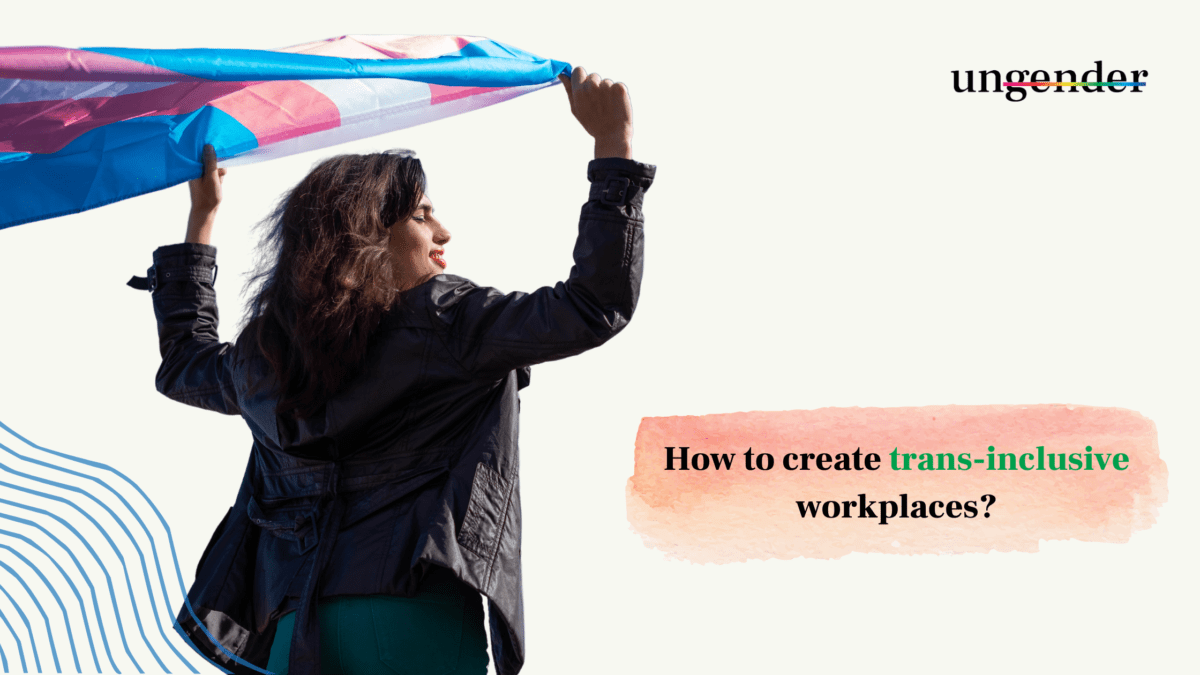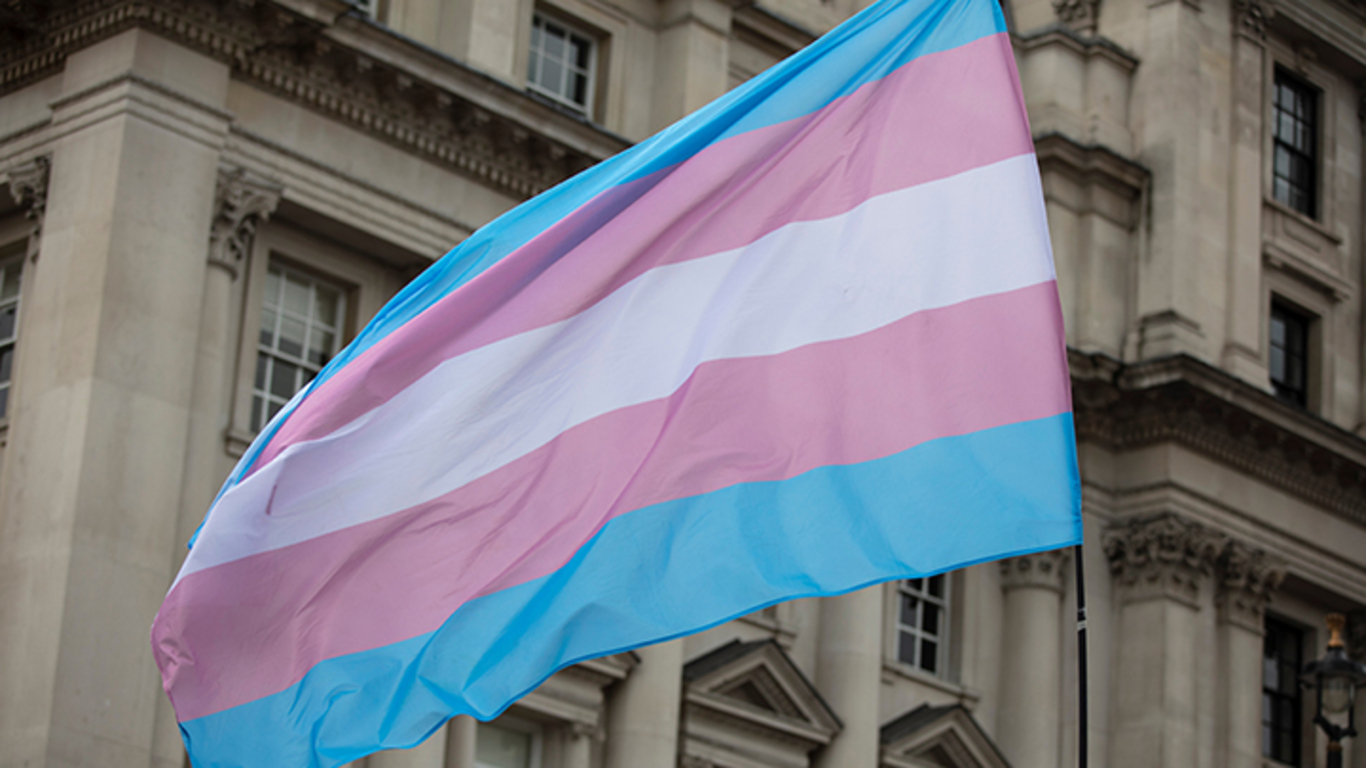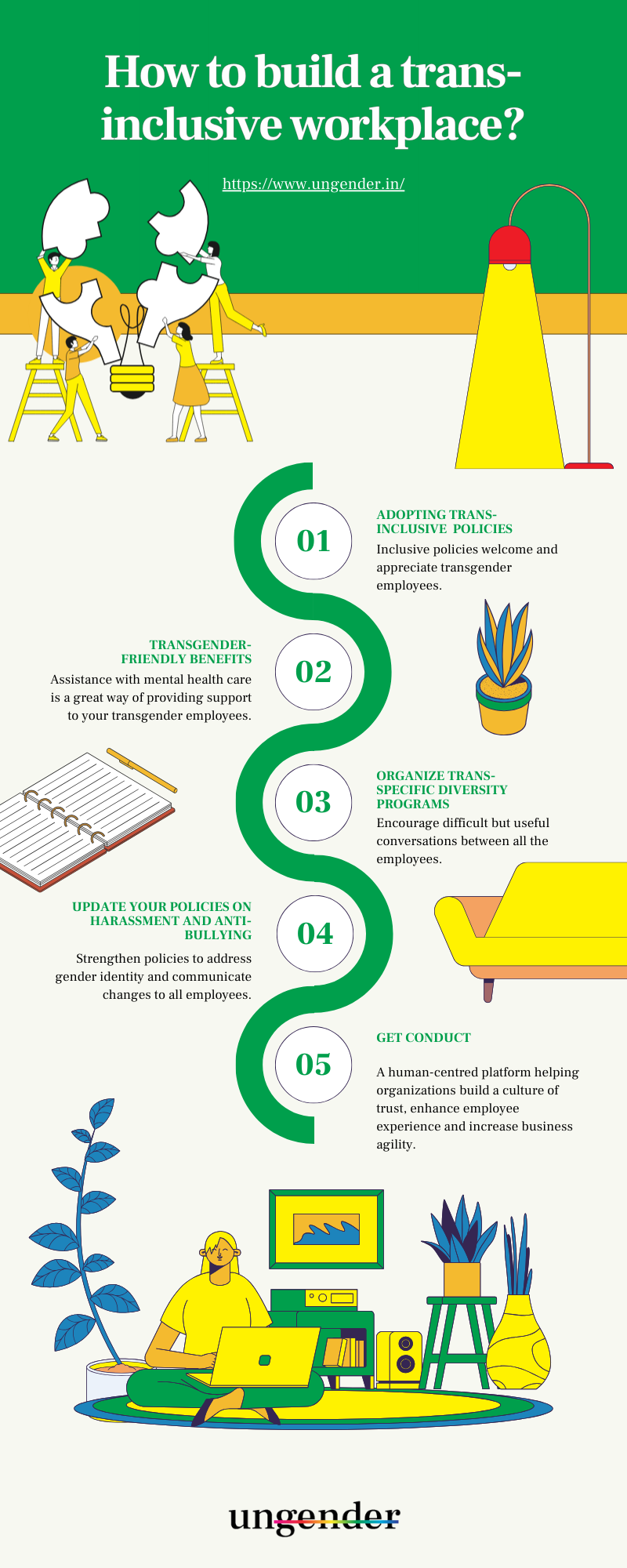How to build a trans-inclusive workplace?

Introduction
Trans-inclusive workplaces should have started long ago because, in public spaces, especially the workplace, transgender people frequently encounter stigma and discrimination. They often face hostility from others and are pressured to ‘manage’ their gender identities. Such events can trigger a wide range of psychological reactions that can have disastrous effects on a transgender person’s emotional health, level of job satisfaction, and probability of remaining with a company. Therefore, it is significant that employers and companies build trans-inclusive workplaces for their transgender employees.
The primary reason for addressing this issue is that it is morally appropriate to do so. Every person who is contributing to the success of the company should never have to fear going to work every day.
Businesses can lose a lot by not implementing trans-specific policies and procedures, such as through a decrease in turnover, less participation and productivity, and even legal action. The company’s reputation is harmed by discriminatory behaviour in general. Employers cannot keep ignoring a large demographic that faces structural hurdles to employment, success at work, and career advancement.
Where do the roots of stigma lie?
People are socialized to understand and act according to their gender identity. From a very young age, we have learned gender-specific behaviour. We are encouraged to showcase stereotypical behaviour specific to our gender identity. Whenever a person displays any behaviour that does not align with society’s norms, they are discouraged from acting that way.
This begins as soon as we start associating the colour pink with the feminine and blue with the masculine. These ‘gender norms’ result in the most basic framework through which a person defines. They are difficult to change because of how widely spread and deeply rooted they are.
However, it is unfortunate that such expectations discriminate against transgender people, especially at work. In an investigation by the Harvard Business Review, a survey of 105 transgender employees revealed that 47% of the participants faced some sort of discrimination daily at their workplaces. This included transphobic comments, being pressured to conform to gender norms, and being ignored.
Discrimination and hostility at your workplace will cost you the retention of top talent, lack of motivation, decreased productivity, and a lack of commitment. When employers, whether intentionally or not, fail to address the discriminatory practices at their workplace, they develop disrepute and the status of an ‘unwelcoming’ place to work.

Challenges transgender people face at work:
A 2015 survey of more than 27000 transgender individuals revealed that at least 77% of them took active steps to evade being mistreated at work. This includes hiding their gender identities, refraining from asking their employers and coworkers to use their correct pronouns and delaying gender transition.
Transgender people might not bring their complete selves to work. They may feel anxious or alienated because they are more likely to have an inequitable work experience than a cisgender employee.
1. Hiring bias
Our culture still largely views gender identity in binary terms. Because of this perception, transgender people face discrimination even before their jobs start. Hiring processes are often biased and discriminate against them. They and people who identify as non-binary don’t want their gender identity or non-conformity to come up during the interview process.
They may also feel the pressure to appear in a certain way that conforms to society’s standards. Cisgender people do not face the pressure of altering their appearances while applying for jobs. A McKinsey survey found that 50% of transgender applicants could not be their complete selves during the job interview process.
2. Workplace exclusion
After selection, a transgender employee is more likely to be alienated at their workplace than a cisgender employee. Most transgender employees do not want to talk about their gender identity at work.
Only 32% of them are comfortable with being completely out at their workplaces. Only 1/3rd of transgender employees who are completely out at work feel safe. More than 1/5th say they were either outed without their consent or were unable to hide their physical identity. Facing stigma and discrimination at work does not let transgender employees participate and engage in their workplaces wholly.
3. Developmental barriers
Transgender employees also face certain barriers in their professional development that cisgender employees don’t. 36% of transgender employees believe that their gender identity affects the likelihood of them being promoted. 37% of transgender employees also believe that gender and sexual identity, sexual orientation, and race are factors that affect promotions at the workplace.
Because transgender employees do not see others like them around or above them on the career ladder, they believe career advancement for them is not possible. Since they already carry the psychological weight of watching out for discrimination, they can become more anxious resulting in lower productivity rates.
Also Read: 4 Reasons why India needs LGBTQIA+ friendly Employment Laws
3 ways to create a trans-inclusive workplace
Companies should start incorporating gender-specific non-discriminatory policies and practices. This involves:
- Safeguarding and promoting the rights of all employees regardless of their gender identities, and
- Increasing the understanding and acceptance of employees for their transgender coworkers.
A study focused on transgender employees found that trans-supportive policies help them feel more open about their identities in their workplaces. They also resulted in a decrease in discrimination and stigma. Here are three ways in which you can build a trans-inclusive workplace:
1. Adopting trans-inclusive workplace policies
Everyone needs a sense of belonging to some degree. We tend to unconsciously assess the quality of our relationships. If our value decreases socially, we experience low levels of self-esteem and negative emotions. Contrarily, a social affirmation or valuation produces opposite results. Praise, appreciation, and acceptance make us feel included and valued.
Similarly, even in workplaces, inclusive policies — using names and pronouns correctly, access to gender-neutral bathrooms, and gender-neutral dress codes — indicate that transgender employees are both welcomed and appreciated.
2. Transgender-friendly benefits for a trans-inclusive workplace
Companies need to take action as allies by introducing benefits that are trans-specific and trans-friendly. For example, assistance with mental health care is a great way of providing support to your transgender employees. A 2016 survey on mental health disparity reveals that transgender people are more likely to have depression and anxiety.
This can also extend to employee policies that cover gender-nonconforming employees of the company. Eliminating gender-specific language and ensuring antibias behaviour at the workplace will also make transgender employees feel more included in their workplaces.
3. Develop and organize trans-specific diversity programs
General sensitization revolving around gender identity is also vital. A lot of people lack the courage and knowledge to challenge norms and stereotypes. Encourage your employees and the management, especially the leaders, to get out of their comfort zones and engage in difficult conversations. Cisgender employees who challenge non-inclusive policies and gender-based discrimination at their workplaces send a positive message of inclusion to their transgender colleagues.
However, cisgender employees must keep a check on their allyship. Speak with your transgender employees and not for them. Minorities do not want their interests represented by another group of people. A saviour mentality might do more harm than good.

Also Read: 10 Steps for developing an effective DEI Strategy for 2022
More ways to support your transgender employees
These are some of how a company can build a trans-inclusive workplace. Over a certain period, making transgender employees feel welcomed and accepted can benefit everyone.
Signalling an inclusive culture is equally important. Companies can take small steps like the ones mentioned below to indicate an inclusive culture at their workplace:
- Go beyond the binary — male and female — gender identities on all your documentation, forms, surveys, job applications, and more.
- Normalize using pronouns other than she/her and he/him whether it is in email signatures, introductions, or business cards.
- Highlight the achievements of transgender employees and encourage their visibility and leadership.
- You can introduce GetConduct to your workplace, a human-centred platform helping organizations build a culture of trust, enhance employee experience and increase business agility.
Help your transgender employees reach their full potential at work. Don’t approach building a trans-inclusive workplace as being trendy from a business standpoint. Instead, pay close attention to the needs of your transgender employees and build a workplace that fulfils their needs.
Ungender is a technology and advisory firm. We help workplaces build an employee-first and inclusive culture. Write to us at sidra@ungender.in to build a safe, diverse, and inclusive workplace.
Read our insights about diversity, legal updates and industry knowledge on workplace inclusion at Ungender Insights. Visit our Blog.
Sign up to stay up-to-date with our free e-mail newsletter.
The above insights are a product of our learning from our advisory work at Ungender. Our Team specialises in advising workplaces on gender centric laws.
or email us at contact@ungender.in





